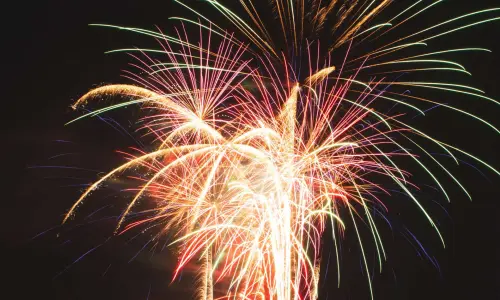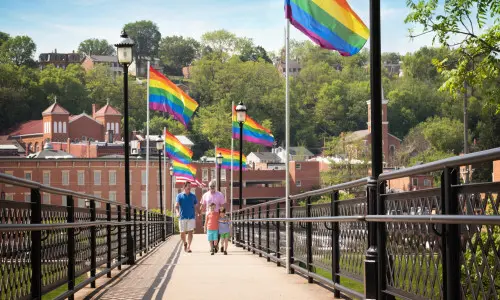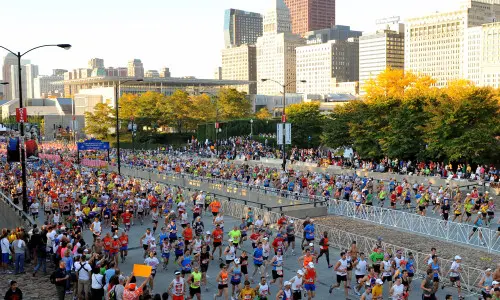Camino a la libertad en el ferrocarril subterráneo Illinois
Visite los lugares secretos donde se alojaban los esclavos en Illinois mientras huían del Sur.
Aug 19, 2019 - Arte, cultura e historia
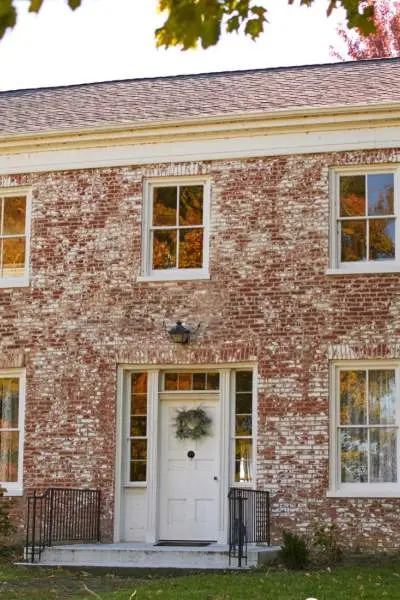
Tras la Guerra Civil, los buscadores de libertad se dirigieron hacia el norte, hacia Illinois. Aunque Illinois era un estado libre, distaba mucho de ser un lugar seguro o acogedor para ellos.
Las Leyes Negras del estado negaban a los afroamericanos la mayoría de las libertades fundamentales (reunirse en grupos, votar, portar armas, etc.), y la Ley de Esclavos Fugitivos exigía a los residentes devolver a los buscadores de libertad a sus dueños. Se patrullaban muchas zonas con la esperanza de capturar a los buscadores de la libertad y devolverlos a sus dueños a cambio de una recompensa.
Esto significaba que tenían que viajar por Illinois discretamente, normalmente al amparo de la oscuridad. Los buscadores de la libertad iban de casa segura en casa segura, un camino hacia la libertad que llegó a conocerse como el Ferrocarril Subterráneo.
Desde Grafton a Galesburg, pasando por los suburbios de Chicago, los visitantes pueden ver las casas (conservadas en su estilodel siglo XIX) y escuchar historias sobre esta época histórica.
Princeton
Muchas de las casas del Ferrocarril Subterráneo IllinoisIllinois eran propiedad de abolicionistas y estaban situadas cerca de ríos. Una de las más famosas es la Owen Lovejoy Homestead, un monumento histórico nacional en Princeton. Debe su nombre al predicador abolicionista cuyo hermano mayor, Elijah, fue asesinado en 1837 por una turba proesclavista a causa de los artículos de opinión que publicaba en el periódico. Lovejoy se trasladó a Princeton y se convirtió en un defensor del fin de la esclavitud, ayudando a esconder en su casa a los buscadores de la libertad. Las visitas a su casa de 1850 muestran las entradas ocultas a los lugares estrechos y escondidos.
Quincy
La primera parada de varios cientos de buscadores de la libertad a este lado del río Misisipi fue en Dr. Richard Eell's House, en el centro de Quincy. Los que cruzaban la frontera desde Missouri se escondían en esta casa de dos plantas de principios del siglo XIX. Hoy en día, la casa del Dr. Eell esla casa de ladrillo de dos plantas más antigua que se conserva en Quincy.
Jacksonville
Hay un recorrido de nueve paradas por los lugares de la ciudad donde se escondieron cientos de buscadores de la libertad, como Beecher Hall y Woodlawn Farm.
Alton
Esta ciudad del Ferrocarril Subterráneo a orillas del río Misisipi ofrecevisitas en profundidad en . Explore la Historia Negra en una visita guiada en lanzadera en la que se utilizan relatos y canciones para dar vida a la historia de la ciudad. Sumérjase en el pasado y conozca la importancia de Alton en el Ferrocarril Subterráneo, descubra a los legendarios abolicionistas que lucharon contra la esclavitud y siga las historias de los líderes locales de los Derechos Civiles que dejaron su huella en la ciudad y en el país.
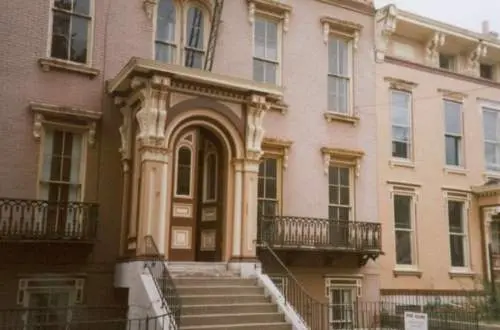
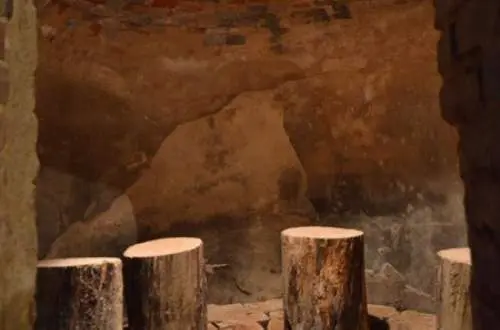
Oakland
El este de Illinois tenía un refugio seguro para los buscadores de libertad en Oakland, en lacasa del Dr. Hiram Rutherford, un buen amigo de Abraham Lincoln. Rutherford participó en el famoso juicio de los esclavos de Matson en 1847, en el que se debatió si los buscadores de la libertad que vivían en la zona eran libres. El juez falló a favor de los buscadores de libertad, y con el tiempo se formó allí una comunidad negra.
Suburbios de Chicago
Los buscadores de la libertad que llegaron al norte de Illinois se detuvieron en docenas de lugares del Ferrocarril Subterráneo en los suburbios occidentales de Chicago. El Blanchard Hall del Wheaton College albergó a muchos en túneles subterráneos. Los túneles ya no existen, pero la universidad tiene una exposición permanente sobre el tema en la primera planta del edificio.
Hay más cosas que ver en Graue Mill and Museum en Oak Brook, una propiedad inscrita en el Registro Nacional de Lugares Históricos. El propietario del molino, Frederick Graue, alojaba a los buscadores de la libertad en el sótano de su molino en Salt Creek. Abolicionistas blancos y negros les traían comida aquí. En primavera se ofrecen visitas guiadas a la propiedad y los visitantes pueden detenerse en el museo, que cuenta con fotografías, documentos y exposiciones interactivas que narran la historia de la "estación".
La LombardHistorical Society ofrece visitas guiadas a la Sheldon Peck Homestead los martes, jueves y sábados (por temporadas). Artista y abolicionista radical, la casa de Sheldon Peck sirvió de cuartel general para todos los opositores a la esclavitud. Se arriesgaba a ser multado y encarcelado por permitir que los buscadores de la libertad se alojaran en su propiedad.
El Servicio de Parques Nacionales sigue trabajando para preservar algunos de estos yacimientos del Ferrocarril Subterráneo en todo Illinois, así como para mejorar su labor educativa.


